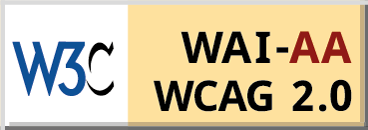Making Sense of the Rouhani Presidency
The elections in Iran defied most prediction but the Rouhani Presidency is unlikely to see any major changes expect possibly for a change of nuance.
- R. S. Kalha
- June 28, 2013
The West Asia Centre seeks to cover issues, themes and countries of the region which are undergoing rapid political transformation impacting the political and security situation of the region and beyond. Popular protests demanding political and economic reforms and the subsequent fall of some long ruling authoritarian rulers and the rise of Islamists to power have significantly changed the region’s political landscape. GCC-Iran rivalry, Shia-Sunni sectarian conflict, external intervention in the region, and the rise of religious radicalism have further aggravated the situation. The Centre is closely following the unfolding internal political developments in individual countries as well as the regional political scenario.
The historical shifts in the region and domestic political developments will have a significant impact on India’s external environment. With huge stakes in the region such as energy, trade and safety of Indian citizens in the region, it has become important for India to carefully watch developments taking place in its ‘extended neighbourhood.’ These and other related issues are being focused upon by the scholars at the Centre. The Centre continues to hold regular bilateral dialogues with some leading think tanks in West Asia thus facilitating exchange of ideas and perspectives.
Current projects being pursued in the Centre are:
No posts of Books and Monograph.
No posts of Jounral.
The elections in Iran defied most prediction but the Rouhani Presidency is unlikely to see any major changes expect possibly for a change of nuance.
The presidential elections come at a time when Iran is reeling under the pressure of sanctions and having been isolated in the region with the rise of Sunni Islamism.
The recent visit by the external affairs minister can be viewed as continuation of new diplomatic push to strengthen bilateral cooperation with Iran despite the difficulties of economic sanctions imposed by the US and EU. However, the real test for both the countries is to maintain and sustain the current momentum.
Constant bickering between Islamist and secular leaders has resulted in deadlock over the new constitution. The Ennahda-led government has been caught between the rock and a hard place, having to deal with increased hostility of the Salafi jihadist movement while at the same being accused of being lenient by the secularists.
While it is too early to predict the outcome of the national dialogue process, at present it looks like that the national dialogue, which is endeavouring to bring all the political parties and other factions under one umbrella, is the last chance for peace in Yemen.
The US may have provided the support and platform for the apology, but it was something Israel had to do desperately as it was finding the developing regional situation difficult to handle with every passing day.
For the Arabs, India’s caution, slow responses and long periods of situation assessments re-affirmed stereotypes about its inability to assume a leadership role in international affairs. However, given the volatility, the most effective way is to “think regionally but act bilaterally”.
The US has spent over a trillion and a half dollars and this huge expenditure has nearly unhinged its domestic economic equilibrium. At the strategic level the results for the US have been even more disconcerting in terms of Iraq's Shiite-led government refusing to let US troops stay on as well as extending support for fellow Shiites in Syria.
Along the short recent journey in discovery of friendly relations, Iran and Egypt have hit roadblocks that are not only ideological in nature but also illustrate their individual compulsions, conflicting national interests and complex regional dynamics.
The Patriot deployments signify Turkey’s attempt to secure itself and its allies against touted missile threats from the two countries with which it shares borders to the east – Syria and Iran.



